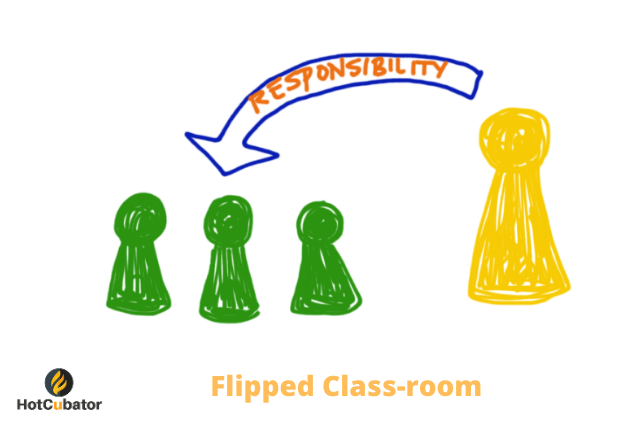
If you are an educator of this era, you have seen that in recent years the educational space is going through rapid wave of change. Much of this has been driven by the advancement of education-led technologies such as Moodle, Blackboard, Echo360, Articulate and so many more tools AKA Learning Management System. Evidence suggests mounting enthusiasm among universities, academics and educational designers toward embedding heaps of technology into curriculum and use the term blended learning quite frequently. Although you may wonder how much blended they are! There is an obvious reason to the technological invasion in education. By and large we have seen that traditional teaching prompts nothing but passive learners who have less ownership in the learning process. Theory-heavy learning becomes redundant after some time and has limited effect in the long-run. Traditional lecture-dominant methods often fail to motivate and encourage the intellectual stimulation of the learner. As a result, educators and educational researchers have questioned the effectiveness of traditional lecture-based teaching methods for decades.
The advancement of instructional technology, coupled with the widespread usage of active learning pedagogy, has given impetus to a radical, yet intuitive, educational model called ‘flipped-teaching’. Flipped-teaching has become an increasing popular approach for re-visioning the learning opportunities, as it allows the students to access information online and study independently of the traditional classroom. In flipped-teaching, lecturers become facilitators, focusing more on facilitation than lecturing. Proponents of the flipped classroom approach tout numerous beneficial outcomes of the approach. Some of these benefits seem quite plausible, such as –including students being more prepared learners, devoting more time into studies, and interacting more in the classroom. Noticeably on the other hand, a school of thought argues that ‘flipping the classroom’ is a mere buzzword that has little effect on the learning process. Indeed, there is limited empirical evidence of flipped classroom approaches improving learning outcome. In fact, some studies have identified potential disadvantages of flipped classroom and these include greater dependency on technology rather than human interaction, variable technical know-how among students and pressure on students to carry greater responsibility for their own learning.
To realise the full potential of flipped-teaching or any other modern technique of education, the educators must remember the following as a guideline –
Technology can never replace human skill
The very first thing that needs to be instilled into the educational policy makers mind that technology is not a panacea to many problems rather just an aid only. Technology can and will never replace human skill i.e. teacher’s capacity to engage students, lecturer’s knowledge etc. While many scholars refute the effectiveness of bricks and mortars class-room, yet class-room is still the best place for learning according to majority of think-tanks. Face-to-face engagement is the best way to engage learners into the learning process. Technology-driven mobility can offer some benefits for to some learner cohort but that is not the most effective means of learning. It should always be remembered that technology can only complement where human skills aren’t adequate.
It is essential strike an ideal balance
You will hear different iterations of blended learning approach, i.e. 80/20 vs 70/30 and so forth. Truth is – there is no accurate guideline of how much blended a curriculum can be or should be. It always gets down to the individual institution or the educator to decide how much technology should be involved. Also, the type of technology to be incorporated should also be reviewed succinctly as they may go over the threshold of your intended learner’s capacity. Overly complicated technological platform can go pear-shaped easily and disengage the learners.
Understanding the learners is the most important part
You cannot apply a one size fits all theory into teaching. Every student is different and their needs are separate. A crafty educator’s job is to single out the factors which will group students into similar cohort and adopt the right teaching technique. These days, there are a range of factors which separate the learners – some learners look for work and study balance, some learners seek flexible learning, some learners want to pursue micro-learning etc. It is therefore absolutely essential to carefully review the factors that separate each learner cohort.
To educate is to empower
The best education is to empower students to take charge of the learning. Education is self-learning. An educator can only help his/her pupil to open up their mind so that they can learn by themselves. No one can teach a learner unless that learner is willing to learn by him/herself. An educator’s job is therefore, find ways to empower the learner by getting them involved into the learning process. Learning should be a two way process, not didactic where there is very less interaction between the learner and the educator.


